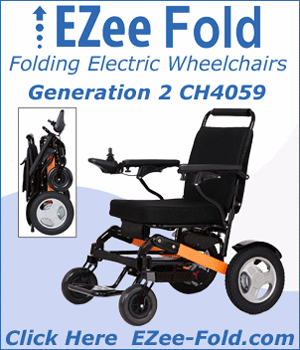Exterior Accessibility Issues
Outside the home there are a few things which should be considered for wheelchair users. While most power wheelchairs will travel over fairly rugged terrain quite well, manual wheelchairs are almost impossible for many people to propel on terrain that is not flat and smooth.
When getting around the yard outside of the house in a wheelchair or with a walker the terrain must be smooth and solid for safe and reasonably easy negotiation. This can mean construction of walkways made of wood, asphalt or concrete need to done. In some cases, depending on the abilities of the user, hard packed paths can be sufficient to get around the yard.
Approaching the House
There should be a paved driveway, or at least a sidewalk that is smooth to allow the wheelchair user to get to the house. The sidewalk can be of wooden construction but ideally the sidewalk will be made out of concrete or asphalt. Traversing lawns and/or gravel driveways is extremely difficult, if not impossible, for manual wheelchair users.
Being outdoors, any surface can become slippery when wet but many hardware stores and some home health care outlets sell products to make surfaces less slippery. These products range from abrasive strips which the backing can be peeled off and stuck to the surface to paint like products which contain a gritty material and are simply painted onto the surface. While these products work well on slippery surfaces due to water they aren't designed to work with snow and ice. Concrete surfaces can be constructed which are heated and will prevent the surface from freezing and thus preventing snow and ice from building up on the surface. These treatments for surfaces can be of benefit for not only wheelchair users but also people without mobility problems.
Accessing Entrances
In a newly built house for a wheelchair user the entrance should be at ground level. I had a client with MS who showed me the plans for the new house that he was building when I delivered his new wheelchair. I notice right away that the entrance was elevated about 2' from the ground level and mentioned to him that if they dug his basement 2 feet deeper he wouldn't need a lift or ramp to gain entry to his new house.
In an existing house a raised entrance requires the use of a ramp or vertical platform lift, commonly known as a porch lift, to raise the wheelchair user up to the entrance level. The advantage of a ramp is that for lower elevations the cost is lower than a porch lift. The disadvantage of a ramp is that even low elevations can be difficult for some wheelchair users to manage, snow and ice must be constantly cleared in the winter to allow for safe use and if the ramp is no longer needed, it's pretty much scrap lumber. Whether choosing a lift or a ramp there should also be set of stairs for ambulatory people to use. Lifts and ramps especially, can be dangerous to use for ambulatory people who have balance problems and stairs are much safer.
Ramps are usually, but not always, less expensive than porch lifts. In most localities the ramp must be one foot long for every inch of rise. This means that if the entrance is 24" above the ground level the ramp must be 24 feet long. This assumes the ground is level. If the ground slopes away from the entrance, the ramp in the in the example will have to be one foot long for every inch of rise from where the ramp begins. Conversely, if the ground slopes up from the entrance the ramp can be shorter.
Porch lifts are mechanical platforms that are powered up and down by electrically powered motors designed to carry wheelchair users from the ground level to the entrance level. Porch lifts can be set to lift just about any height up to about 12 feet. While fairly expensive, a porch lift to lift 48" can be less expensive than a ramp 48 feet long that will require landings and railings. Porch lifts also have an advantage in that they can be sold used if no longer needed, or uninstalled and taken in the event the wheelchair user moves.
Home Accessibility Links
- Outside Accessibility
- Entrance Accessibility
- Layout & Level Accessibility
- Doorway Accessibility
- Other Accessibility


 Online Vendors
Online Vendors  US Online Vendors
US Online Vendors 
